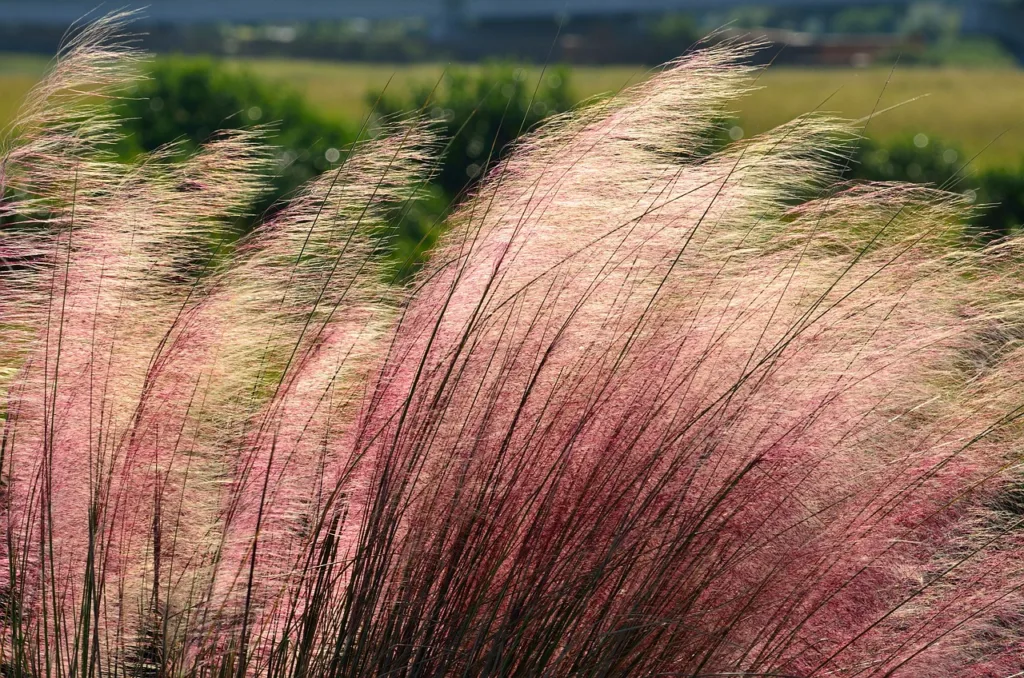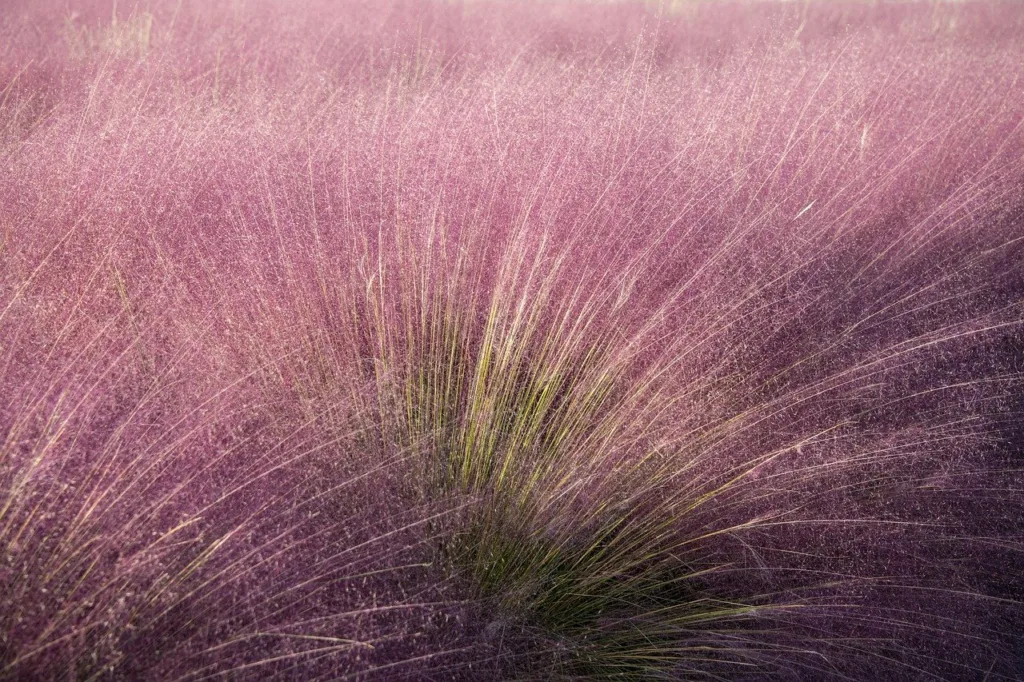Muhlenbergia capillaris, also known as Pink Muhly Grass, is a highly attractive ornamental grass that adds a touch of elegance to any garden or landscape.
With its vibrant pink plumes swaying gracefully in the breeze, it undoubtedly captures the attention of onlookers. The plant is not only visually appealing but also hardy and easy to grow.
As such, it has become increasingly popular among gardeners and landscapers alike. Its unique aesthetic qualities make it an excellent addition to any outdoor space, providing a pop of color and texture that endures throughout the year.
This native grass species is native to the southeastern United States and has gained popularity for its unique and stunning appearance in garden landscapes.
| Characteristic | Description |
|---|---|
| Scientific Name | Muhlenbergia capillaris |
| Common Name | Pink Muhly Grass |
| Family | Poaceae (Grass family) |
| Type | Perennial ornamental grass |
| Height | Typically 2 to 4 feet tall |
| Spread | Forms clumps with a spread of 3 to 4 feet |
| Foliage | Narrow, green leaves with a fine texture |
| Flowers | Airy, feathery pink plumes in late summer to fall |
| Blooming Period | Late summer to early fall |
| Sun Exposure | Full sun |
| Soil Requirements | Forms clump with a spread of 3 to 4 feet |
| Drought Tolerance | Moderate drought tolerance |
| Cold Hardiness | USDA hardiness zones 6 to 9 |
| Uses | Landscapes, borders, mass plantings, ornamental gardens |
| Maintenance | Low maintenance, cut back in late winter or early spring to encourage new growth |
| Special Features | Attracts butterflies; drought-tolerant; adds texture and color to landscapes |
The Right Location of Pink Muhly Grass
Before you start planting Pink Muhly Grass, it’s important to choose the right location in your garden. Here are a few key factors to consider:
Sunlight: Pink Muhly Grass thrives in full sun, so make sure the chosen spot receives at least six hours of direct sunlight each day.
Soil: This grass prefers well-drained soil, but it can tolerate a wide range of soil types. If your soil is heavy and clay-like, consider adding organic matter to improve drainage.
Space: Pink Muhly Grass can spread up to four feet in diameter, so make sure to provide enough space for its growth.
Planting Pink Muhly Grass
Once you’ve found the perfect location, it’s time to plant your Pink Muhly Grass seed. Follow these steps for successful planting:
Prepare the Soil: Remove any weeds or grass from the planting area and loosen the soil with a garden fork or tiller. This will create a suitable environment for root development.
Dig the Hole: Dig a hole that is twice as wide and as deep as the root ball of the plant. This will give the roots enough space to spread and grow.
Place the Plant: Gently place the Pink Muhly Grass plant seed in the hole, making sure the crown is level with the ground surface.
Backfill the Hole: Fill the hole with the soil you removed while digging, making sure to firmly press the soil around the plant to eliminate air pockets.
Water Thoroughly: After planting, water the grass deeply to settle the soil and promote root growth.
Watering and Mulching Pink Muhly Grass
Proper watering and mulching are essential for the healthy growth of Pink Muhly Grass. Follow these guidelines to keep your grass thriving:
Watering: Pink Muhly Grass is drought-tolerant once established, but it still requires regular watering during its first growing season.
Water deeply once a week, providing about an inch of water. Adjust the frequency based on rainfall and temperature.
Mulching: Apply a layer of organic mulch, such as wood chips or straw, around the grass to conserve soil moisture, suppress weeds, and maintain an even soil temperature.
Avoid piling the mulch against the grass as it may cause rotting.

Fertilizing and Pruning Pink Muhly Grass
While Pink Muhly Grass doesn’t require much fertilization or pruning, a little care in these areas can enhance its growth and appearance:
Fertilizing: Pink Muhly Grass generally grows well without excessive fertilization. However, applying a slow-release, balanced fertilizer in early spring can encourage healthy growth. Follow the manufacturer’s instructions for the appropriate dosage.
Pruning: Pink Muhly Grass is a low-maintenance plant, and pruning is only necessary for aesthetic purposes or to remove dead foliage.
Cut back the grass to about six inches above the ground in late winter or early spring before new growth appears.
Pests and Diseases Pink Muhly Grass
Pink Muhly Grass is relatively resistant to pests and diseases. However, some common issues may arise:
Leaf Spots: Fungal leaf spots can occur, causing small, brownish spots on the blades. To prevent this, avoid overhead watering and ensure good air circulation around the plants.
Aphids: Aphids may occasionally infest Pink Muhly Grass. If detected, spray the affected stems and leaves with a mild soap and water solution or use an insecticidal soap according to the product instructions.
Winter Care Pink Muhly Grass
Pink Muhly Grass is hardy and can withstand cold temperatures. However, some additional care can help it survive the winter months:
Leave the Foliage: Allow the grass to keep its foliage during winter as it provides some protection to the crown and root system. The dried plumes can also add visual interest to your garden.
Safeguard against Frost: In areas with severe frosts or freezing temperatures, you can cover the grass with a layer of straw or leaves to provide extra insulation and protect it from extreme cold.
Types of Pink Muhly Grass
However, variations may exist in terms of size, growth habit, and intensity of the pink plumes. Here are a few noteworthy selections:
Muhlenbergia capillaris ‘Regal Mist’:
Characteristics: ‘Regal Mist’ is a cultivar known for its finely textured foliage and intensely vibrant pink to reddish-purple plumes. It tends to be slightly more compact than the species.
Muhlenbergia capillaris ‘White Cloud’:
Characteristics: While not pink, ‘White Cloud’ is a cultivar that stands out for its unique white plumes, providing a distinctive alternative for those seeking a lighter color in their landscape.
Muhlenbergia capillaris ‘Fast Forward’:
Characteristics: ‘Fast Forward’ is recognized for its earlier bloom time compared to the standard species. This can be advantageous for gardeners looking to enjoy the stunning plumes a bit earlier in the season.
Muhlenbergia capillaris ‘Lenca’:
Characteristics: Also known as Lenca Pink Muhly Grass, this cultivar is praised for its vigorous growth and prolific production of vibrant pink plumes. It’s a popular choice for landscape designers.
Muhlenbergia capillaris ‘White Cloud’:
Characteristics: This cultivar features white plumes, providing an elegant and softer appearance compared to the traditional pink. It offers a unique option for those looking for diversity in color.
Muhlenbergia capillaris ‘Pink Flamingo’:
Characteristics: ‘Pink Flamingo’ is admired for its particularly large and showy pink plumes. The name reflects the vivid and flamboyant nature of the flowering display.

| Muhly grass typically requires approximately three years to attain its complete width, while it attains almost its full height within the first year of planting. This ornamental grass is known for its pink hue. Muhly grass, also known as Muhlenbergia capillaris, is a non-invasive plant species that is commonly used in landscaping and gardening. Unlike some other plant varieties, Muhly grass does not spread or reseed. However, it requires division every three to four years, which is in line with the maintenance needs of most perennials. Therefore, gardeners and landscapers should be mindful of this maintenance requirement and schedule regular division of Muhly grass as part of their routine care program. |
Pink Muhly Grass Near Me
Local Nurseries and Garden Centers:
Check with local nurseries and garden centers. They often carry a variety of ornamental grasses, including Pink Muhly Grass.
Landscaping Companies:
Contact local landscaping companies or garden design professionals. They might know where to source Pink Muhly Grass or can include it in their landscape designs.
Online Plant Retailers:
Explore online plant retailers that ship to your location. Many nurseries offer online purchasing and can deliver plants to your doorstep.
Botanical Gardens or Arboretums:
Visit botanical gardens or arboretums in your area. They may have displays of Pink Muhly Grass, and staff might provide information on where to obtain it locally.
Community Plant Sales or Events:
Attend local plant sales, garden events, or farmers’ markets. These gatherings often feature a variety of plants, and you might find Pink Muhly Grass available for purchase.
Ask Local Gardeners:
Connect with local gardening clubs or enthusiasts. Experienced gardeners might share information about where to find Pink Muhly Grass in your region.
Conclusion
Planting and caring for Pink Muhly Grass is a rewarding experience that adds a touch of elegance and beauty to any garden.
By choosing the right location, providing proper watering and mulching, and giving it occasional fertilization and pruning, you can ensure the healthy growth of this stunning ornamental grass.
With a little TLC, your Pink Muhly Grass will thrive and delight you with its graceful pink plumes for years to come. So go ahead, plant some Pink Muhly Grass, and enjoy the breathtaking beauty it brings to your outdoor space!
People Also ask
Where does pink muhly grass grow best?
Pink Muhly Grass (Muhlenbergia capillaris) thrives best in locations with full sunlight. It is well-suited for well-drained soil and can adapt to various soil types.
This ornamental grass is native to the southeastern United States but can be successfully grown in a range of climates, including those with hot summers and mild winters.
How long does pink muhly last?
Pink Muhly Grass is a perennial, meaning it comes back year after year. It is known for its longevity, and with proper care, it can persist for many years in the garden.
The vibrant display of pink plumes typically occurs in late summer to early fall, adding a burst of color to the landscape.
How do you collect pink muhly grass seeds?
- To collect seeds from Pink Muhly Grass:
- Allow the seed heads to fully mature on the plant.
- Once the seeds are dry, gently shake or brush them to release.
- Collect the seeds in a container.
- Store the seeds in a cool, dry place for future planting.
Keep in mind that Muhly Grass can also spread through rhizomes, so division is another method of propagation.

